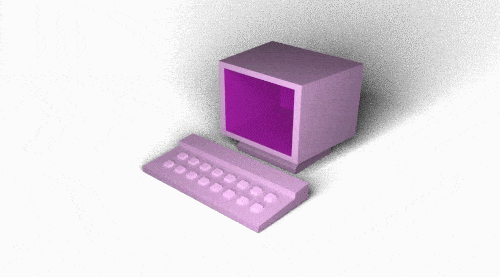

I was struggling for a while with how to label/title possible thoughts and ideas for this column on Archinect; a series of texts and visual materials developed around creative robotics, philosophy, interaction design, XR, etc. and all as part of a design-thinking towards post-digital discourse! I know! It seems to be a lot, and it IS a lot! This struggle, however, led into a bigger/deeper question about the notion of what I—and a group of my colleagues and friends, do.
We are not “computational” designers/developers, coders or programmers but we are geeks who program machines and robots, develop apps, develop XR experiences and create UI/UX. We are not philosophers, but we run our studios and practices as “hands-on/maker philosophers”—if such combination ever existed! We are not product or fashion designers, but we design wearables, gadgets, tools, and devices. We love doing—almost everything part digitally, but we cannot accept them to live digitally and only on a screen—a digital screen or a monitor! We are POST-Screen!
This way of thinking is probably presenting a specific vision—that is open to be criticized and modified, but—through this specific lens, what is a screen now? An outdated interrupter of a possibly authentic digital, physical or hybrid experience. It reframes all the digital “experiences,” statements, speculations, visualizations, etc. the same. In another format, it reduces our possible physical interactions with a digital “experience”/scene, to the touches of fingers, clicks of a mouse or presses of keys on a keyboard! Screens—at their current stage, are banal immature Alice In Wonderland rabbit holes with an unsuccessful attempt to “connect” or create a hybridization! The issue starts when the concept of a digital screen is being introduced/misinterpreted as a tangible—or even hybrid cyber-physical, medium or tool for “experiencing.” Initially and in their early stages of being, “digital” screens as heavy, chunky, fat, deep magic boxes are—more or less, communicators or messengers to show an error, “talk” to the operator and ultimately run an “experience”/operation outside of them.
A screen then is clearly an interface and “part" of a controlling platform to communicate with the “digital” brain of the computer and was not the host of the outcome or the experience.
A screen then is clearly an interface and “part" of a controlling platform to communicate with the “digital” brain of the computer and was not the host of the outcome or the experience. This distinction between the operation, interface, end experience and screen as a communicator has been very clear. Moving away from their binary characteristics as a backend controlling—user-interface (UI) and connector, screens started to become platforms to host the user experience slowly. However, they were and are not capable of a possible engagement/ “immersion” desired for an experience. A screen either is an interrupter of a fully digitalized fantasy world, by constantly reminding the user of the boundaries of that physically “framed” digital fantasy, or is a plain, “flat”—or curve(!) physical experience platform with zero depth and immersion, where minor of “digital” qualities are converted into an experience—through representation/ imagery of that experience.
Moving beyond screens—both “into” the screens and outside of them, this column, “post-screen” is a discussion platform, with an attempt to collect ideas and discuss different digital/post-digital projects, thoughts and approaches to challenge the outdated interrupted blurring boundaries of multiple framed design and experience mediums with a hope for finding more honest extremes.
Screens—at their current stage, are banal immature Alice rabbit holes with an unsuccessful attempt to “connect” or create a hybridization!
Different from reads and understanding of digital/post-digital projects conversation as intellectual transitional components of the contemporary design thinkings, design methodologies, aesthetics, etc., post-screen hopes to look into a less tool-oriented conversation, with a focus on mediums of interaction, expression, and experience. A collection of experiences ranging from robotic projects using robots in “post-assembly line” manners and as physical extensions of the digital thinking medium, to XR—augmented, virtual and mixed realities, which are—in a way, digitalizing tangible human sensory systems through digitally augmented or immersive experience.
Seeking almost everywhere—except the thickness of monitors/digital screens (!), post-screen hopes to collect series of conversations, perspectives and ideas that are challenging the notion of how we—as designers, think, design and curate understandings, by authentically physicalizing, digitalizing or hybridizing experiences.
Ebrahim Poustinchi, architect, artist, and inventor, is an Associate Professor of Digital Design at Kent State University. He has previously taught at the University of Kentucky, Washington State University, and UCLA. Poustinchi’s research is focused on the intersection of media and ...
2 Comments
aaaaah ooooo my soup too hot hooo aaaahh soup hot hot
Post-digital will be when the power grid fails and everybody goes back to real work.
The phallic graphic is a good metaphor for the pounding we're getting from the digital age.
Block this user
Are you sure you want to block this user and hide all related comments throughout the site?
Archinect
This is your first comment on Archinect. Your comment will be visible once approved.